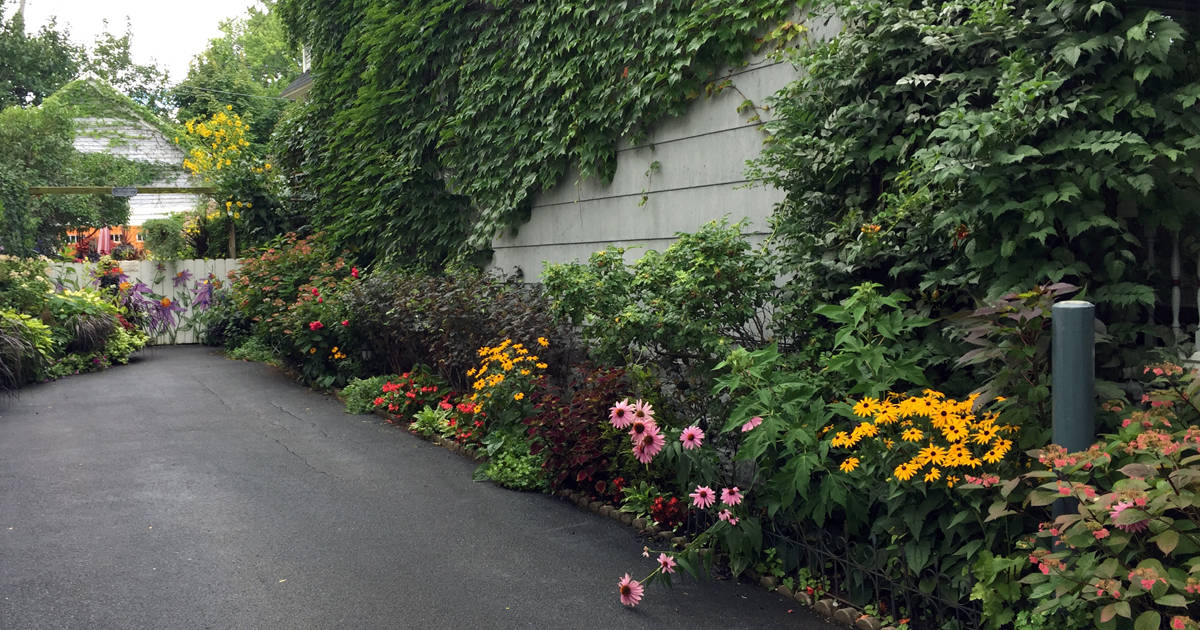9 Easy Facts About Hilton Head Landscapes Described
Table of ContentsLittle Known Questions About Hilton Head Landscapes.Not known Factual Statements About Hilton Head Landscapes 7 Simple Techniques For Hilton Head LandscapesThe Best Strategy To Use For Hilton Head LandscapesThe smart Trick of Hilton Head Landscapes That Nobody is Talking AboutHilton Head Landscapes Things To Know Before You BuyUnknown Facts About Hilton Head Landscapes
Line develops all types and patterns and can be utilized in a selection of means in the landscape. Line in the landscape is produced by the edge in between two products, the synopsis or silhouette of a form, or a lengthy straight feature. Lines are an effective tool for the developer since they can be used to develop an unlimited variety of forms and types, and they manage movement of the eye and the body.

Lines in the landscape. The homes of lines figure out just how individuals respond to the landscape, both emotionally and literally.
Hilton Head Landscapes Things To Know Before You Buy
Straight lines are most often located in hardscape edges and product. Rounded lines create a casual, natural, relaxed personality that is associated more with nature and unbalanced balance. Bent lines move the eye at a slower rate and add secret to the room by producing hidden sights. Upright lines move the eye up, making a room feel larger.
Vertical lines in the landscape include tall, slim plant material, such as trees, or tall structures, such as an arbor or a bird residence on a pole. Horizontal lines relocate the eye along the ground plane and can make an area feel bigger. Reduced lines are much more restrained and produce a sensation of remainder or repose.
Not known Facts About Hilton Head Landscapes
Low lines are created by reduced yard wall surfaces, pathways, and short hedges. Lines are used to draw kinds on a strategy. In strategy view, they define plant beds and hardscape areas. Lines are likewise produced by the vertical kinds of constructed attributes and plant product. There are three primary line types that develop type in the landscape: bedlines, hardscape lines, and plant lines.
Bedlines connect plant product to your home and hardscape since the eye complies with the line, moving the gaze via the landscape. Hardscape lines are produced by the side of the hardscape, which defines the built framework. Line can likewise be created by lengthy and narrow products, such as a fencing or wall surface.
Hilton Head Landscapes Fundamentals Explained
Type is located in both hardscape and plants, and it is commonly the leading visual element that spatially organizes the landscape and usually identifies the design of the garden. The form of structures, plant beds, and yard accessories also figures out the total type theme of the yard. Formal, geometric kinds include circles, squares, and polygons.
Plants produce kind in the yard through their outlines or silhouettes, but form can likewise be specified by a gap or adverse space between plants - landscaping hilton head sc (https://www.tripadvisor.in/Profile/h1tnhdlndscps). Circles can be cycles, or they can be divided right into half circles or circle sections and incorporated with lines to produce arcs and tangents
Some Of Hilton Head Landscapes
Circles are a strong design type since the eye is constantly attracted to the facility, which can be made use of to stress a focal factor or connect other forms. Circular forms in hardscape and lawn panels.
The square type can likewise be segmented and secondhand repetitively to create a grid pattern. Unlike circles, squares are more powerful on the brink, which can be aligned or overlapped to produce special patterns and more intricate types. Polygons are many-sided types with straight edges. Triangles, for instance, are three-sided polygons.
Twisting lines often mimic the all-natural course of rivers or streams and can be called smooth lines with deeply bent undulations. Twisting lines (Number 3) work well for pathways, plant bedlines, and completely dry stream beds. Meandering lines can add interest and enigma to a yard by leading audiences around corners to uncover new views and spaces.
The Hilton Head Landscapes Diaries

Number 5. Fragmented sides: tipping rocks in path. Type is the most long-lasting top quality of a plant (bluffton landscaping). https://packersmovers.activeboard.com/t67151553/how-to-connect-canon-mg3620-printer-to-computer/?ts=1719958014&direction=prev&page=last#lastPostAnchor. Common plant types are well established and standardized, as kind is the most consistent and identifiable characteristic of plants. Type can also be created with the massing of plants, where the total mass why not try here creates a various form than a private plant.
An extremely different kind must be utilized with careone or 2 job well as a centerpiece, however as well several create mayhem. All-natural plant types, as opposed to over-trimmed forms, ought to establish the mass of the structure. The importance of total kind is basically depending on the seeing perspectivethe type of a tree can appear quite different to a person standing under the cover versus checking out the tree from a range in an open field.
The Of Hilton Head Landscapes
Plant kinds additionally produce and define the void or open rooms between the plants, creating either convex or scooped kinds in the gaps. High-arching tree branches commonly develop a concave open space under the branches, and a rounded canopy with low branches loads the area to create a convex type in the open room under the tree.
